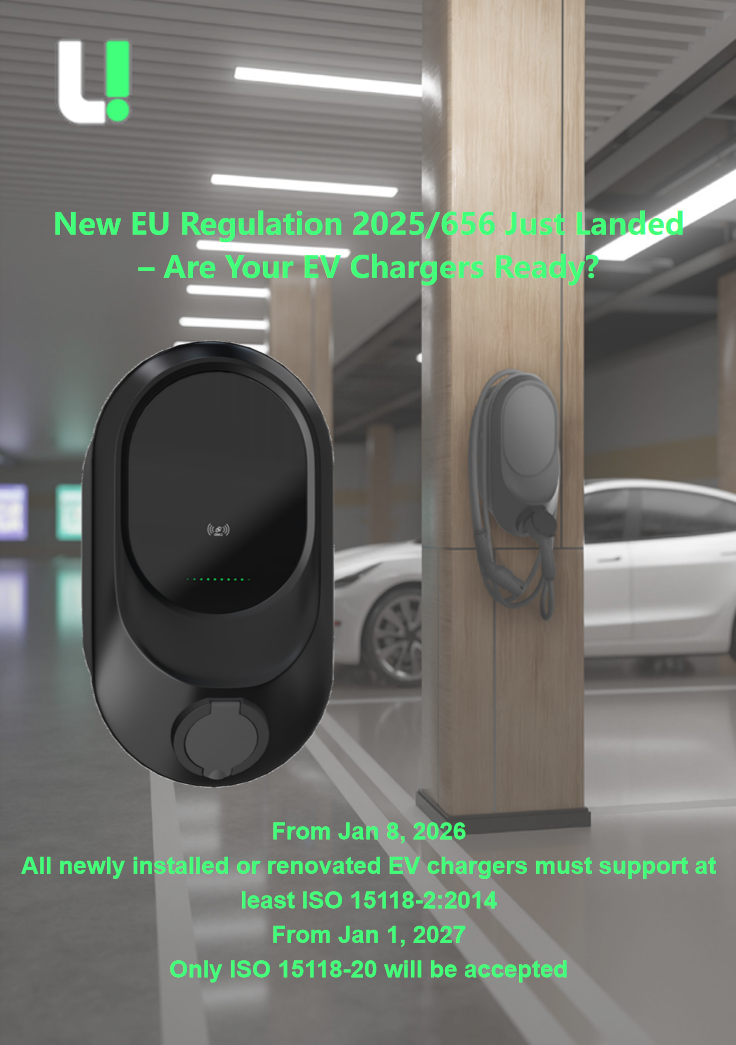 Looking to stay compliant with EU EV charging rules? Regulation (EU) 2025/656 updates standards for AC/DC chargers, ISO 15118 protocol, and Plug & Charge capabilities. Here's what manufacturers and operators need to know to stay ahead.
Looking to stay compliant with EU EV charging rules? Regulation (EU) 2025/656 updates standards for AC/DC chargers, ISO 15118 protocol, and Plug & Charge capabilities. Here's what manufacturers and operators need to know to stay ahead.
As the electric vehicle revolution accelerates across Europe, so do the regulatory frameworks shaping the future of charging infrastructure. On June 18, 2025, the European Commission published Delegated Regulation (EU) 2025/656, updating key technical requirements under the Alternative Fuels Infrastructure Regulation (AFIR).
This regulation is more than just a technical update — it sets a new baseline for interoperability, safety, and future-proof communication between charging points and electric vehicles.
Let’s dive into the most critical takeaways.
🔌 Mandatory Connector Standards – Effective Jan 8, 2026
From January 8, 2026, all newly installed or refurbished AC and DC chargers must meet the following requirements:
AC Chargers (≤22kW)
⦁ Must support Type 2 connectors per IEC 62196-2:2022
⦁ Low-power (≤3.7kW) chargers may optionally use Mode 2 plugs under IEC 60884-1:2022
DC Chargers → Must include Combo 2 (CCS2) connectors, compliant with IEC 62196-3:2022
L-Category Vehicles (e-bikes, scooters) → Can use Type 3A or Mode 1/2 connections for AC charging
Chargers installed before this date can remain in service until refurbished or upgraded.
📡 Smart Communication & Grid Interaction
To enable seamless communication and Plug & Charge capabilities, the regulation sets a clear roadmap:
From Jan 8, 2026
⦁ Chargers must support ISO 15118-2:2014 or equivalent
⦁ Optional early adoption of ISO 15118-20:2022 for V2G and advanced features
From Jan 1, 2027
⦁ ISO 15118-20 becomes mandatory
⦁ ISO 15118-2 will no longer be accepted
This transition ensures all new infrastructure is future-ready — enabling secure vehicle authentication, V2G compatibility, and smarter load balancing.
⚙️ What About Wireless & Dynamic Charging?
The EU is also preparing for the next wave of innovation:
Wireless static charging (e.g., EN 61980-1, -2, -3)
Dynamic on-road power transfer (e.g., CLC/TS 50717)
Though not yet mandatory, these technologies are on the horizon and will be addressed in future regulations.
📈 Why This Matters to Manufacturers & CPOs
Compliance is not just a legal obligation — it's a competitive advantage. By upgrading to these new standards, manufacturers and Charge Point Operators (CPOs) can:
⦁ Ensure cross-brand compatibility across Europe
⦁ Enable cutting-edge features like Plug & Charge
⦁ Prepare for V2G applications and energy market integration
⦁ Align with public tenders and government funding programs
🔎 Frequently Asked Questions (FAQ)
What is EU Regulation 2025/656 about?
It updates technical requirements for EV chargers in the EU, including mandatory use of Type 2 and CCS2 connectors, and ISO 15118 for communication.
When does ISO 15118-20 become mandatory?
From January 1, 2027, ISO 15118-20 will be required for all new or refurbished EV chargers across the EU.
How does this affect EV charger manufacturers?
Manufacturers must ensure future-proof compliance with AFIR and communication standards like Plug & Charge and V2G readiness.
Tags:
#EU656 #EVCompliance #ISO15118 #AFIR #PlugAndCharge #V2G #SmartCharging #EVInfrastructure #ChargerIn #EVSE #DCCharger #Type2 #CCS2 #EVChargingRegulation
